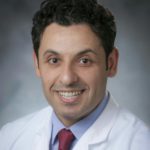The population older than 65 years of age is expected to peak at 20 percent of the population in 2030. By that year, more than 19.5 million U.S. adults will be older than 80 years of age. Due to this large increase in the geriatric population, major efforts are needed to ensure adequate and appropriate health care for the elderly. The prevalence of systolic and diastolic heart failure, atrial fibrillation, aortic stenosis, and electrical conduction defects increases with age, resulting in a significant burden of cardiovascular disease (CVD). Aging itself creates distinctive dimensions to CVD management as both absolute risk reduction, and the potential for harm from treatment, increase with advancing age.
Cardiovascular imaging (CVI) is used for screening (detecting asymptomatic cardiac disease), diagnosing the cause of symptoms, defining the extent of cardiac disorder in a patient with known disease (including risk stratification), monitoring the progression (or regression) of disease, and guiding therapeutic management, including decisions about aggressive therapy. There is a paucity of evidence to guide the rational use of many CVI modalities in patients of advanced age. There are senescent effects in cardiac morphology and physiology as well as broader organ systems changes in elderly patients. Older patients used to be clinically heterogeneous with different age related arterial compliance and left ventricular (LV) diastolic dysfunction. Although, the Appropriate Use Criteria (AUC) do not integrate age as a factor in determining the appropriateness of an imaging test, in part due to a lack of data. Nonetheless, there are a number of other important factors associated with aging which impact the use of cardiac imaging in the senior population. Older patients, regardless of underlying disease severity or comorbidities, undergo fewer invasive cardiovascular evaluations than younger patients.
A key aspect of advanced age, is that the concept of high risk burden must be considered in the context of age-related management efficacy. In contrast to younger populations, the high risk, high prevalence and high burden of disease in the elderly population leads to a situation in which CVI is likely to detect disease for which the implications of therapy are uncertain. Thus, if structural or functional abnormalities are detected in an asymptomatic patient, management decisions may still remain ambiguous. Detection of non-obstructive atherosclerotic coronary artery disease (CAD) in an elderly diabetic with peripheral vascular disease will, for example, not likely lead to any intensification of medical therapy beyond that which is already indicated. In contrast, in other scenarios imaging has substantial clinical impact, including rationale for selecting patients mostly likely to benefit from interventions that may prolong and improve quality of life.
The elderly group had a lower prevalence of CAD risk factors but high degrees of ischemic events and cardiac mortality. Given the high pretest probability of CAD in relation to advanced age, the prognostic utility of a stress study may be particularly useful. CVI adds additional prognostic power and is necessary as part of pharmacological stress, for the majority of the elderly who cannot complete a treadmill exercise protocol. With the growing focus on transcatheter aortic valve replacement (TAVR) the particular value of imaging for common valvular decisions in older adults has advanced as a clinical priority. Transthoracic echocardiography (TTE) is the central imaging modality to detect and characterize the degree of aortic stenosis. In addition to TTE, contrast-enhanced computer tomography imaging in necessary to ensure that vasculature will be able to tolerate the large bore catheters that are required for the procedure. Newer percutaneous mitral valve repair techniques are also options for some elderly patients who are poor surgical candidates and TEE is necessary to demonstrate leaflet anatomy amenable to novel percutaneous interventions.
Approximately 1%–2% of the adult population in developed countries has heart failure (HF), with the prevalence rising to ≥10% among persons 70 years of age or older. HF is underdiagnosed in elderly patients who often lack specific symptoms and usually present with comorbidities that can confound diagnostic assessments based primarily on symptoms. Therefore, TTE plays an important complementary role in establishing a diagnosis for patients with HF symptoms. In addition to guiding management, cardiac imaging plays a central role in prognostication in HF. Currently, LV ejection fraction (LVEF) is the primary imaging criteria to determine which patients are candidates for implantation with a biventricular pacemaker for cardiac resynchronization therapy. While such devices have demonstrated to improve survival and quality of life, they also entail procedural risk, particularly for older candidates.
CVI is essential in the treatment of CVD in the elderly, but more data are needed on the optimal use of imaging in this population. Better delineation of clinical indications for imaging relevant for older adults in the context of broader age related complexity is a key need. While decisions should be individualized for each patient, investigations into imaging in subpopulations of the elderly may provide clinicians (and, perhaps, future AUC task forces) necessary data to consider patient-level factors such as comorbidities, frailty, functional limitations and cognitive decline in determining the appropriateness of imaging modalities for certain indications.

Dr. Fawaz Abdulaziz M Alenezi is a Clinical Imaging Fellow at the Duke University Health Systems. He conducts medical research on the derivation and validation of novel echocardiographic approaches to myocardial deformation and a new echocardiographic technique which assists patients with heart ventricular function.